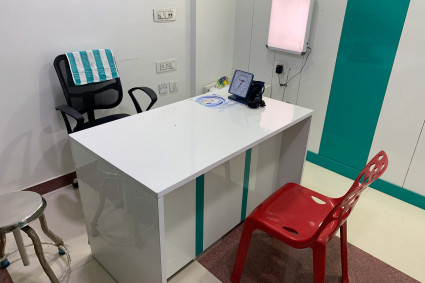Building awareness and adopting practices to ensure your back’s health, both in the short and long-term, are essential.
How to Relieve Lower Back Pain?
1. Don't let lower back pain frighten you.
Certainly, there are many things you can do to provide relief. Most lower back pain is acute and won’t last an extended time. Numbing the pain and relaxing the muscles will help the situation improve over the course of a couple of days.
You aren't the only one with this issue - it's widespread. Fortunately, many remedies exist for this circumstance and most of them can be employed at home. All you need is a bed or yoga mat, ice, and a hot water bottle. Long-term lower back pain can be avoided with certain lifestyle changes. Make these modifications and you will be grateful you did.
No matter if this is your first experience of lower back pain, or if it's a regular occurrence, understanding how to best handle your pain and the practices that work best for you is key. The kind of pain you're feeling can range from a dull ache from a strained muscle to intense pain from a muscle in spasm or electric, burning pain from a pinched nerve.
2. Minor back pain.
Usually, minor back pain should dissipate in a few weeks or months, which is known as acute pain, but if pain persists for more than a few months and considerably interferes with your daily life it is classified as chronic pain and may require additional treatments and lifestyle changes.
Physical therapy, gels and anti-inflammatories can be used to alleviate acute pain, while chronic pain requires more thorough diagnoses and interventions. It is also helpful to learn more about how the back works and find out what practices work best for you.
Do some research and take charge of your own recovery! Learn more about the mechanics of your lower back and how posture and pilates can help you avoid and alleviate pain. With the right knowledge, you can become an advocate for your own health and get closer to radiant pain-free living.
How to Prevent Pain?
The behavior we can affect includes how we stand, sit, sleep, walk and bend. Repeatedly unbalancing these activities over time can weaken our back network and cause pain. Poor posture, misalignment, and muscle and disc strain can all lead to an aching back. It’s useful to take a look in the mirror every so often to check our posture. Taking note of any physical imbalances and working to correct them can make a huge difference in the health of our lower back.
We put a great strain on our backs with activities such as:
- Staying hunched over a computer for hours on end (this creates 30% more pressure on the spine than standing or walking)
- Smoking (it limits our blood flow by 30%, and can cause the intervertebral discs to dry out)
- Putting on excess weight (gravity pulls the extra weight directly onto our lower back)
- Taking long flights (followed by lifting heavy baggage)
- Wearing tight clothes or skinny jeans (these impede our natural movements)
- Walking in high heels (not the best idea in terms of back health)
Without realising it, these activities can build up a vulnerability in our back, increasing the risk of further injury.
Common Triggers of Lower Back Pain
You might be in danger of triggering lower back pain. Common triggers for it might include:
- Sitting for long periods of time without getting up to move
- Texting and looking down at his phone for extended periods of time
- Lifting heavy objects without bending at the hips
- Carrying a backpack or laptop bag on one shoulder
- Twisting to tie his shoe or pick something off of the floor
For relief from lower back pain, start by icing the area. Place a towel-wrapped pack of frozen peas on the area, leaving it there for 15-20 minutes. Repeat this as many times as necessary within the first 48 hours. Afterwards, switch to heat by using a heating pad, heat pack, hot water bottle, or warm bath or shower. Apply heat for 15-20 minutes at a time, as needed.
What are the Best Treatments for Lower Back Pain?
The most important thing to do, after the first day or two of lower back pain, is to return to normal movement. But how you go about your day can help relieve pain or bring it back.
These are the activities that help:
Do regular activity exercises
You should avoid too much bed-rest. It weakens the muscles and makes your back more subject to negative impacts
When you exercise, blood and vital nourishment are delivered to your muscles. Exercise is not just beneficial for healing, but it is also instrumental in fortifying the muscular system to stave off future occurrences of back pain. At the same time, though, be sure to stay away from activities that cause discomfort.
Get rid of your office chair or make it at least ergonomic
Spending too much time seated can put stress on an irritated muscle. Swap out that chair for a standing desk for part of your day so that your legs can help bear the load.Take frequent breaks
If standing for extended periods of time increases your lower back pain, then take a break and rest your lower legs on a chair or bench for 15 minutes. This will give you a refreshing break throughout your day.
Be sure to stretch
Stretches that focus on the lower body, such as the buttocks, legs, and hips, can be beneficial for relieving lower back pain. Aim for 20-30 minutes of stretching 3-5 times per week for optimal relief. Take notice of your posture and ensure you're standing with your weight evenly balanced. Avoid standing in one position for too long, and do not slouch while sitting.
Do more yoga
For millennia, yoga has demonstrated its ability to shape and condition the entire body, including vital organs. While you're increasing your physical strength, you are simultaneously reducing the anxiety and distress that comes with discomfort.
These yoga poses are especially recommended for lower back pain relief:
- Pigeon
- Sphinx
- Legs up the wall
- Cat cow
- Hip flexors stretch
- Downward-facing dog
- Reclining Bound Ankle
- Cobra
- Child pose
- Triangle
- Knees to Chest
- Supine Hip Flexor
- Wall Sit
- Bird Dog
- Pelvic tilt
- Bridge
- Warrior
Include strength training
At home, try strength training exercises such as squats, lunges, push-ups, planks, and crunches. These will help to lessen lower back pain, tone your muscles, increase bone density, improve joint stability, and improve your balance.Add some low-impact aerobic exercise
To help reduce inflammation and improve circulation to your aching back muscles, try doing low-impact aerobic exercises. This is not the time for HIIT (high-intensity interval training), as it may cause increased discomfort. Walking is a great way to provide relief, or you could use an elliptical trainer, step machine, stationary bike, or water aerobics.Keep your core strong
When you have a strong core, your lower back is better supported, making it less susceptible to injury. If you want to have a strong back, you must start with a strong core. Core muscles help to keep the lumbar spine aligned and stable. Before you pick up something heavy, make sure your core is engaged. Doing plank variations correctly can strengthen your core further. Delving into Pilates can help you build an even stronger core, ultimately leading to better support for your lower back and reducing the risk of injury.
Don’t trust all exercise videos on YouTube
Online exercise trainers have never met you or your back. Be careful to not do more harm than good with one-size-fits-all training.
Avoid touching toes, sit-ups, and leg lifts. These moves call on already challenged lower back muscles.
Get positive emotions!
Do you like being around friends? Do you enjoy being active outdoors? Whatever it happens to be, find a way to engage in these activities with the people you care about. Hanging out with friends and engaging in activities that make you happy can kick-start your brain's production of endorphins, providing relief from lower back pain. So, don’t underestimate the power of a smile, a good laugh, and the company of loved ones.
To get positive emotions you can:
Laugh with friends
Hug a friend
Volunteer or donating to charity
Enjoy spicy food
Calm down through meditation
Be in nature
Drink wine
Indulge in dark chocolate
Dance to music
Have a sauna
Enjoy natural remedies for stress and inflammation
Self-care goes a long way to relieve lower back pain. These are sure to make you feel better all over.
Do a self-massage with almond oil, sesame oil, or olive oil.
Diffuse essential oils in your room. You can also apply oils, very diluted, directly on your lower back (especially peppermint, wintergreen, lavender, rosemary, and chamomile).
Take an Epsom Salt (magnesium sulfate) bath for 20 minutes.
What about pain medication?
Try not to abuse painkillers. They should only be used as a temporary pain reliever. Remember: painkillers do not cure the pain of sprains or ligaments, they only mask it. If you continue living with back pain every day without removing the cause of back pain, side effects can be severe.
Try complementary medicine
If you‘ve tried everything at home and your lower back pain persists, it‘s worth seeking some tailored advice, specific to your pain, from specialists with proven success:
- Chiropractic
- Acupuncture
- Massage
- Myofascial therapy
- Osteopathy
- Physical Therapy
- Hydrotherapy
- McKenzie method
- Gokhale method
- Egoscue method
What’s important is that every day you pay attention to how you sit, stand, and what you eat. You create good habits that’ll serve you. A strong pain-free back will be your reward in the future.
When to See a Doctor?
Most back pain resolves itself within a few weeks without treatment. However, if your back pain is constant or intense, especially at night or when lying down, or if it is accompanied by weakness, numbness, or tingling in one or both legs, or with unintended weight loss, swelling, or redness on the back, you should schedule an office visit with your health care provider.
Be sure to see a medical doctor if you have any of these symptoms, along with lower back pain, as extra care may be needed.
- Fever
- Chest pain
- Numbness in the legs, buttocks, or groin area
- Difficulty passing urine
- Loss of bladder or bowel control
- Unexpected weight loss
Additionally, emergency medical care is necessary if your back pain results from a trauma such as a car crash, bad fall, or sports injury, or if it is accompanied by a fever, or new bowel or bladder control problems.
If there is no opportunity to visit the doctor, use telehealth services. Of course, your physiotherapist won’t be able to touch your back, but at least they will give some advice to help you relieve the pain or prescribe the necessary medication.





